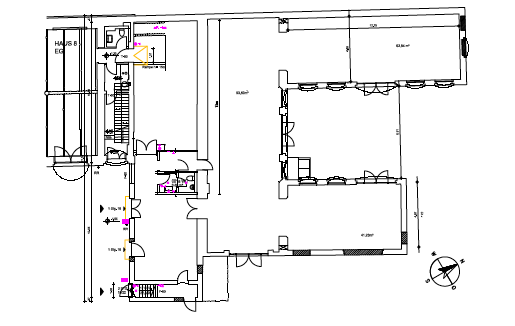Das Arbeitende Konzert/ The Working Concert (AK) is a work series of and investigation in musical composition.
Conceptualized, perspectivized and framed as performative installation, the work focuses on concerts and their mediality. Within this context concerts and the media they mobilize are regarded not as neutral containers but as forms of exhibitions and as critical dispositifs. The series of scores and concerts-as-exhibitions under the title AK Revision (x) acts as a retroactive manifesto of generative as well as critical structures supplying future work with a reservoir of virtual potentialities. The “Working” signaled here is both literal and conceptual. It is literal in reference to the ongoing working through of activating and actualizing musical material and its performative conditions. Conceptually, the AK operates as a vital tool for rethinking the foundation of what is understood as composition and how this understanding is framed by epistemological regimes.
Conceived as recherche à longue durée, the AK presents the procedures of music-making to the general public and to those who are professionally investigating in music, be it from an artistic, communication-related or academic perspective. Dell has placed great emphasis on both; inviting musicians from very different backgrounds to the AK and on locating it in different exhibition spaces which allows to recontextualize the concert format in a cross-disciplinary way.
Since 2014 IX significant Revisions of the AK have been performed and exhibited. They have been discussed by researchers, journalists, curators, and many other qualified contributors from around the globe. Revisions were shown at Teatro Garibaldi in Palermo, Künstlerhaus Bethanien, Aedes Network Campus, Aedes Architecture Forum and Emil Berliner Studios in Berlin, Gallery 5020 in Salzburg, Loft in Cologne and the International Ensemble Modern Academy in Frankfurt, all of which allowed for a working process antithetical to the ingrained characteristics associated with concert institutions. The configuration of these concerts-as-exhibitions involved rethinking all the various aspects of the concert as installation, exhibition, publication, public event, performance, communication, public signage, and audience reception. An integral part of Dell‘s concert-as-exhibition concept is an examination of the building’s architecture. For the Revisions, Dell stages the musicians as sculptural performers without pedestal or stage elements in the center of the concert room, enabling the visitors with the option to choose their perspective on the performance. Dell thus takes the idea of fashioning these rooms of different sizes and foot-prints into a rigorous and, as it were, living architectural material for the presentation of his performative research. Futhermore, in order to lay out his specific concept, Dell has contextualized and perspectivized the AK in an artist’s book published in 2020 by Spector Books, Leipzig.1
The operational mode of the AK can be defined as a score-based approach to musical spatialisation. Through the lens of this work Dell not only invests in exploring what each singular musical action represents in a compositional sense but he also aims to identify it, amplify it and frame it conceptually. At the same time, however, Dell zooms out and mobilizes the perspective of the entire configuration of a musical field, which he also wants to represent. In this sense one may understand the AK as a dynamic, multi-scale musical map. Undeniably this specific mode of working is deeply informed by the epistemological cosmos of the science-in-the making. For instance, one may trace the representational strategies of the AK back to Ian Hacking’s famous description of historical epistemology’s practice: “We represent in order to intervene, and we intervene in the light of representations.”2
The radical consequence for the AK that results from this theoretical positioning is to understand everything that arises musically during a performance in a compositional sense, independently of the procedure used to produce the musical space. By this is meant that every performative element is regarded as composed. Whether it was created with a conventional notation system or without is irrelevant. There are many forms of composition. Certainly, however – and this is not an ontological but a cultural-historical observation – in the Western hemisphere an additional effort is required to take a score-based view of music that does not involve a score in the conventional European understanding. What the AK brings to the foreground, then, is the social aspect of music itself. Or, conversely, it demonstrates that aesthetics are never neutral. Aesthetics propositions are always permeated by social regimes of vision. Along these lines the work of the AK aims at contributing to an expansion of what one understands by aesthetics and how one uses aesthetic apparatuses to help organize the social.
1 Christopher Dell, Das Arbeitende Konzert/ The Working Concert (Leipzig: Spector Books, 2020)
2 Ian Hacking, Representing and Intervening (Cambridge: Cambridge University Press, 1983), 31.
To the extent that the AK, on the one hand, refers to and transposes or deconstructs other musical works, it exposes and thematizes, on the other, the mediality of the work itself as display, be it installation, concert, or exhibition. In its sparse visualization and its minimal, condensed structure, AK is Christopher Dell’s strongest model and template for subsequent work in different media so far.
“Das Arbeitende Konzert/ The Working Concert” Revision X at IEMA
In collaboration with Spector Books Leipzig, the AK ’s Revisions I–VII and the process of their creation have been relocated to the book space. The book contains scores, documentary material, photographs, and concept texts that have driven and/or led to the AK in the oeuvre of Christopher Dell.
Das Arbeitende Konzert/ The Working Concert. The Book
2020, Spector Books, Leipzig
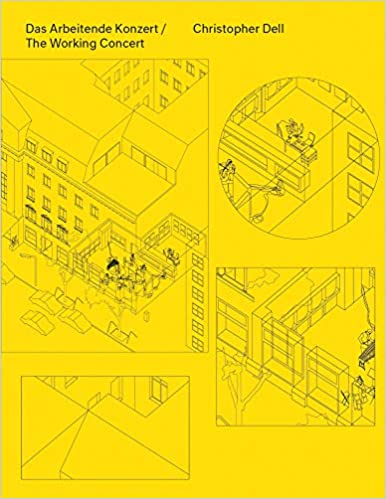
17 Oktober 2019, Galerie Fünfzigzwanzig, Salzburg
with
œsterreichisches ensemble fuer neue musik
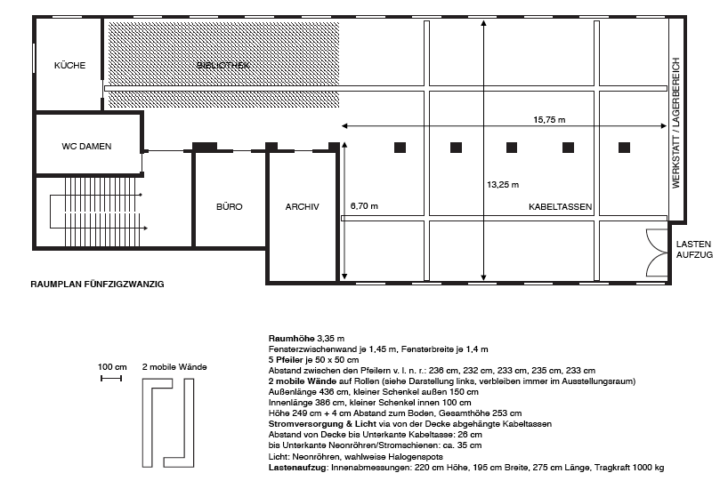
Das Arbeitende Konzert/ The Working Concert Revision VI-VII
18-19 Juni 2018, Emil Berliner Studios, Berlin
mailorder physical CD and Booklet: info@niehler-werft.de
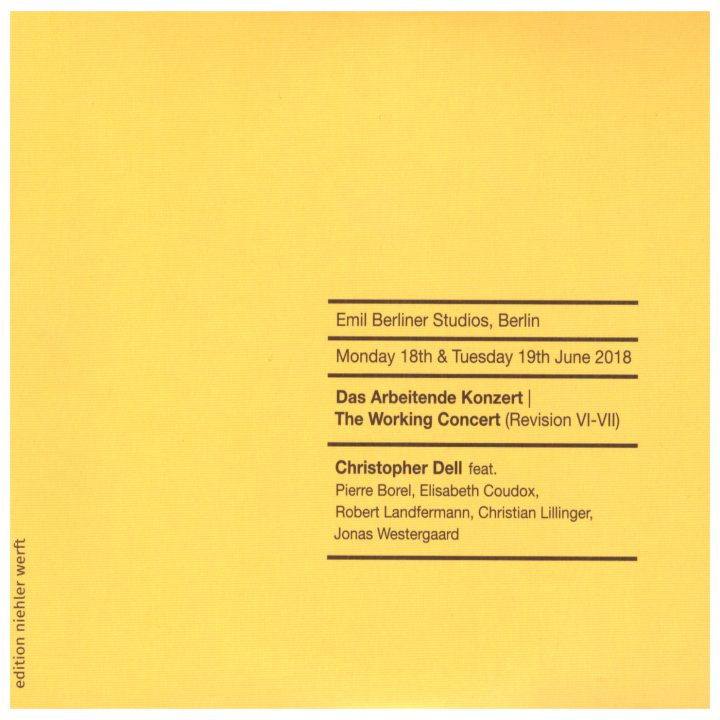
Das Arbeitende Konzert/ The Working Concert Revision IV-V
17-17 Juni 2018, ANCB Metropolitan Laboratory, Berlin
Das Arbeitende Konzert/ The Working Concert Revision III
23 Oktober 2014, Theatro Garibaldi, Palermo
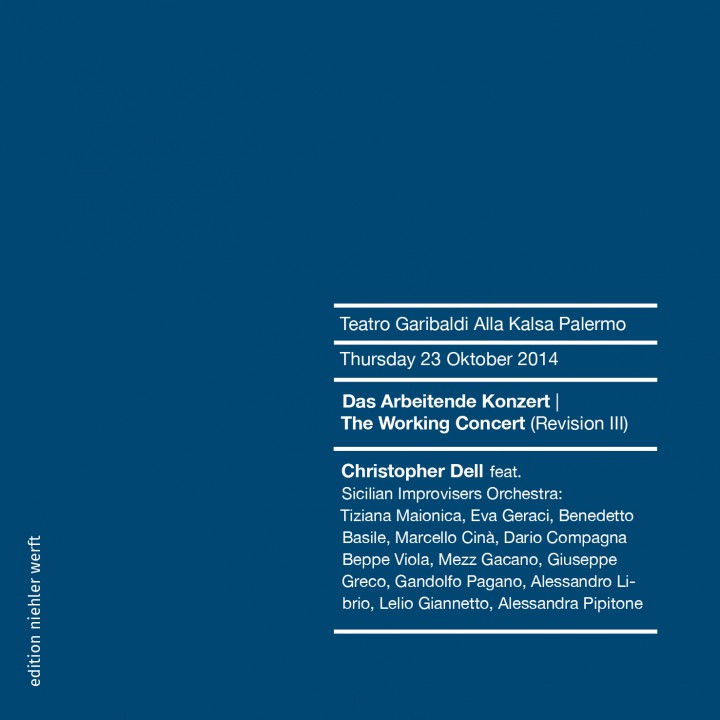
Das Arbeitende Konzert/ The Working Concert Revision II
22 Oktober 2014, Theatro Garibaldi, Palermo
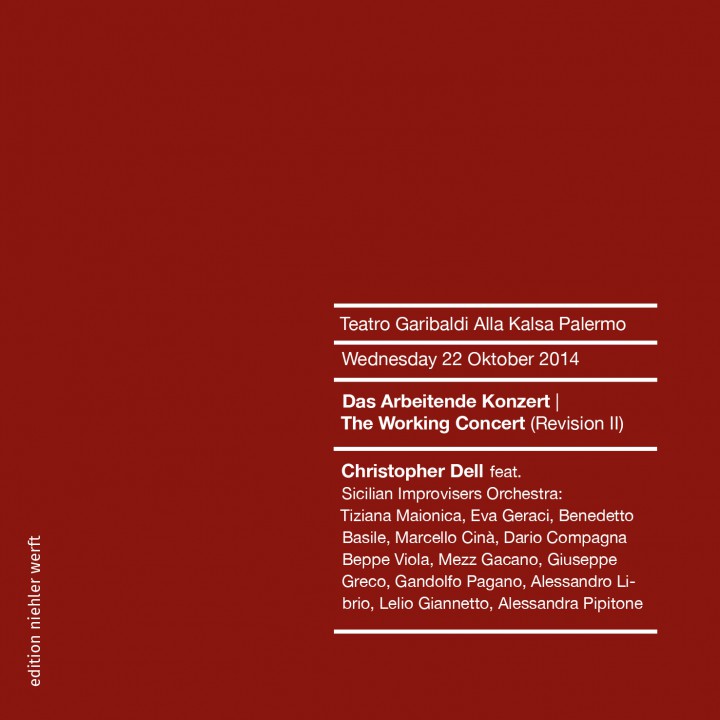
Das Arbeitende Konzert/ The Working Concert Revision I
24 Juli 2014, Kunstraum Kreuzberg/ Bethanien, Berlin
mailorder physical CD and Booklet: info@niehler-werft.de
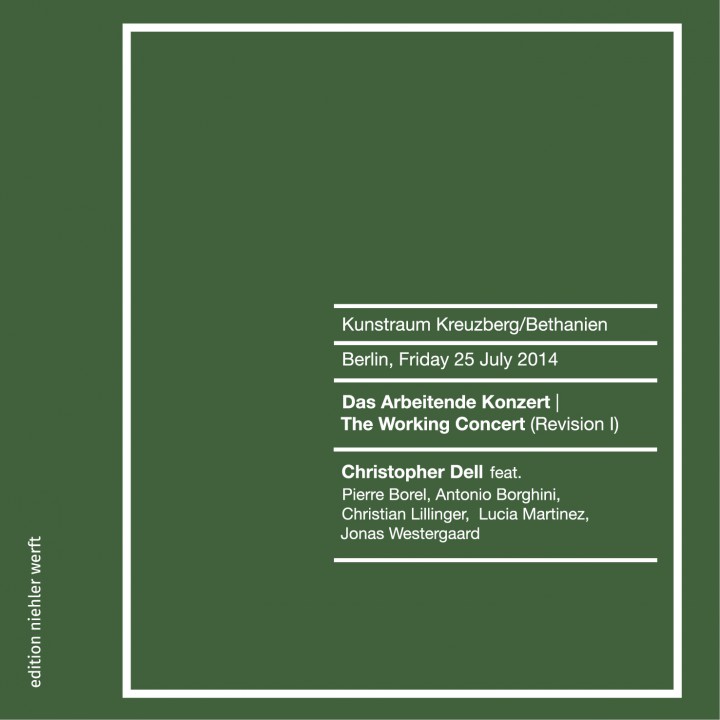
The conceptual work of my work cycle “Das Arbeitende Konzert/The Working Concert” (AK) focuses, on the one hand, on the further development of a specific compositional grammar, on the other hand, on the thematisation of performance practices and their specific spatialisations.
The latter aspect, the spatialisation of musical action, is of particular current importance, also in view of the consequences of the pandemic for the concert business. My source material here is my book publication “Das Arbeitende Konzert/The Working Concert”, which was published by spector books Leipzig in June 2020. Where this book combines music and spatial notation, it examines the lines of interrelation between musical and spatial action as well as between the concert and its spatial situatedness. This investigation is rooted in AK’s interventionist performance practice, which, as a performative installation, turns every performance into a laboratory situation. As concert, construction and rehearsal converge, a multi-scale dispositif of showing emerges that makes musical practice visible, negotiable and discursive in a new way.
The aspect of the further development of a specific compositional grammar involves a long-term work. In 2019, I was able to conduct research in the archives of the Paul Sacher Fondation on the occasion of a studio scholarship from the Fondation Bartels in Basel. The result is a collection of notes on pre-score material by Earle Brown, Roman Haubenstock-Ramati, Pierre Boulez, Luciano Berio and Bruno Maderna. In view of this, part of the further work consists of investing time in the processing of the note material in order to take the next step in the conceptual and practical contouring of the group of works.
What I am striving for in terms of artistic research is the medialisation of music in spatial and temporal contexts. Based on this, AK – like most of my work groups – is conceived as a series in which musical processes and strategies are portrayed over certain fixed periods of time and at certain temporal intervals. This method of the cumulative series enables me to work in a multi-scale manner, also in terms of time. What is relevant here – as the forced pause of the pandemic, for example, most impressively demonstrated – is not only what the performances or their recordings show, but also what is articulated in the temporal cuts and jumps in between, i.e. in the temporal cuts and jumps between the performances.
Within AK’s process, it is not only about making visible drastic changes that occur over time, but also the subtlest movements from one moment to the next. An essential aspect of this is seriality. So far, 9 revisions of the format have been performed. While I have conceptualised each performance in terms of the particular spatial situation, the essence of the artistic process emerges from the series. Thus AK stands for a fundamental scepticism towards the claim of being able to adequately represent the specificity of a musical procedure with individual concerts. For me, the musical structure is revealed neither in an idealised staging of the concert nor in the specificity of a particular moment. What I strive for, on the contrary, is to document the becoming of music, to show its changing perspectives on itself and its changing form.
